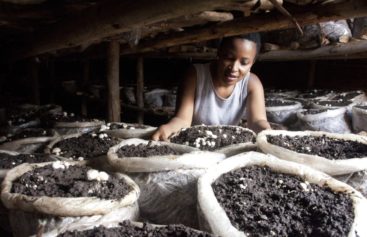
A KWS ranger stacks one of the ivory pyres. Photo courtesy of CNN.com
It’s an overpowering display of the sheer size of Africa’s poaching crisis.
For the past week, several dozen men have circled a site in Nairobi National Park, unloading elephant tusks from shipping containers — many of them so big it takes two men to carry one tusk — and building them into towers of ivory up to 10 feet tall and 20 feet across.
It forms something like a graveyard for some of the world’s iconic endangered species.
On Saturday, the graveyard will turn into a crematorium.
Kenyan President Uhuru Kenyatta will light a match to 105 tons of elephant ivory, 1.35 tons of rhino horn, exotic animal skins and other products such as sandalwood and medicinal bark.
This destruction of illicit wildlife goods dwarfs anything similar that has been done before.
The tusks alone — from about 8,000 elephants — would be worth more than $105 million on the black market, according to wildlife trade expert Esmond Bradley Martin.
The rhino horn, from 343 animals, would be worth more than $67 million. Together, it’s more than $172 million worth of illicit wildlife goods going up in smoke.
That’s one and a half times more than Kenya spends on its environmental and natural resources agency every year.
But the Kenyans say that the stockpile is not valuable — it’s worthless.
“From a Kenyan perspective, we’re not watching any money go up in smoke,” Kenya Wildlife Service Director General Kitili Mbathi said. “The only value of the ivory is tusks on a live elephant.”
That’s not just conservationist rhetoric.
Tourism, mostly from wildlife, makes up about 12 percent of Kenya’s GDP. Over its life, a live elephant generates 76 times more in tourism revenue than it does for its ivory, according to the David Sheldrick Wildlife Trust, an elephant rescue and rehabilitation group.
Read more here.

